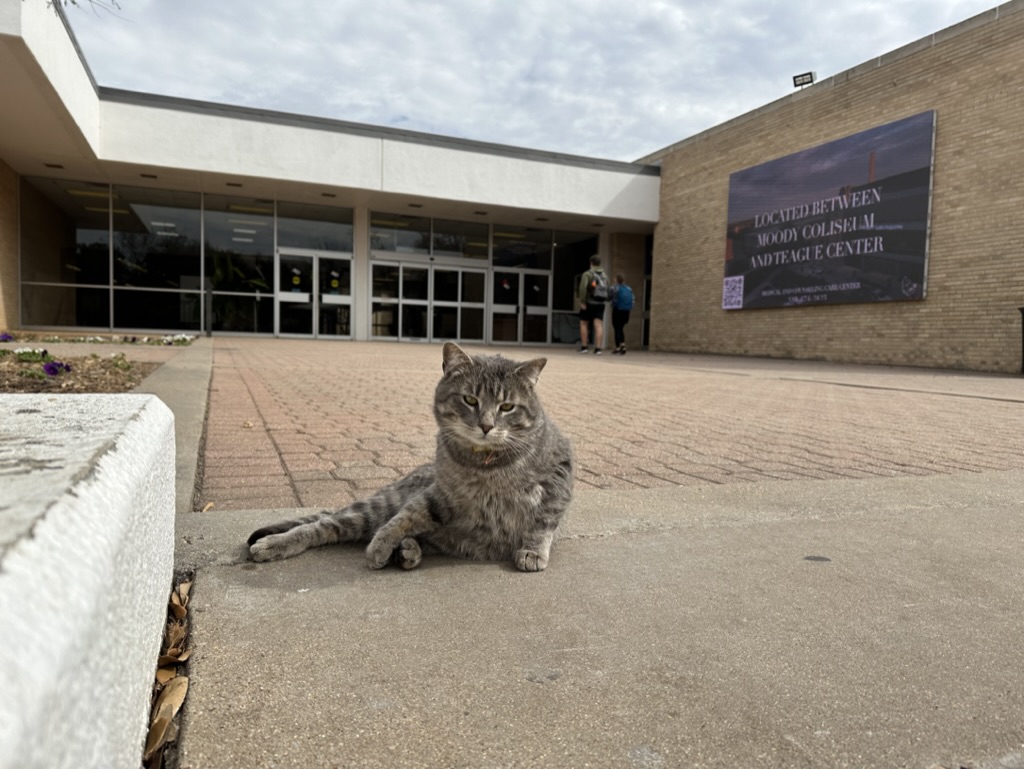Students in the Department of Agriculture and Environmental Sciences are conducting research on feral cat colonies and how they interact with each other using the feral cats on campus as the subjects of the research.
Dr. Jim Carpenter, professor and chair of the department of agriculture and environmental sciences, and students began this research as a part of a class on wildlife management and techniques.
Carpenter and students have a goal of tracking one male and one female from each of these colonies. So far among the five colonies on campus, they have collared two cats from the Library colony and one from the Onstead Science Center colony.
The research project is approved to track seven cats with their radio transmitter collars, however, one cat will have an Apple airtag tracking system.
“This is an area in terms of what’s known, there’s a lot known about feral cats but this is an area where not a lot of research has been done,” Carpenter said. “Looking especially at a TNR site that’s on campus and how much do the cats roam off of the campus, and again when you have multiple groups and how they interact with each other there has not been very much study done on that.”
Feral cats are trapped by either catching them using nets or with a cage. They are then fitted with the transmitter collar that transmits radio waves in order to track them. Students participating use the transmitter around campus and listen for beeps to pinpoint the cats fairly accurately.
Students participating are tracking cats one week at a time. While the research is just starting, students will track throughout the day in block time for seven straight days.
This is peers doing research, said Andrew Nunns, senior environmental science major from Grandview
“We’re all wanting to have a career in this field,” Nunns said. “We were all wanting that experience that comes with this project.”
The students participating alongside Nuuns in the project are as follows:
- Avy Langston, junior environmental science from Colleyville
- Blakely Eller, senior biology from Abilene
- Brissa Guzman, senior environmental science from Abilene
- Emily Thornock, junior environmental science from Shawano, WI
- Ian Massey, junior environmental science from Benbrook
There is an educational component to this project, students were involved in designing the study, said Carpenter, professor and chair of the department of agriculture and environmental sciences.
“On the research side, the purpose of it is we know we have a feral cat population but we don’t know a whole lot about how far they roam and how much the different groups of cats on campus interact with each other,” Carpenter said.
The landscaping and grounds crew who are in charge of the cats would like more information as well, Carpenter said.
“There is a lot of interest in feral cats on campus, a lot of people would like to know more about them,” Carpenter said. “But also since I have this education component to it, having the students do a project where they are here on campus is a lot easier to conduct a research study here.”
The department is asking students to leave the collars on cats alone if found, however if there is a collar found students are encouraged to bring it back to the front desk in the office for the department of agriculture and environment sciences.
“If this goes the way we are planning to, it will go through the summer,” Carpenter said. “I’d like to continue it for about a year and we are hoping to present it at a conference next year.”

